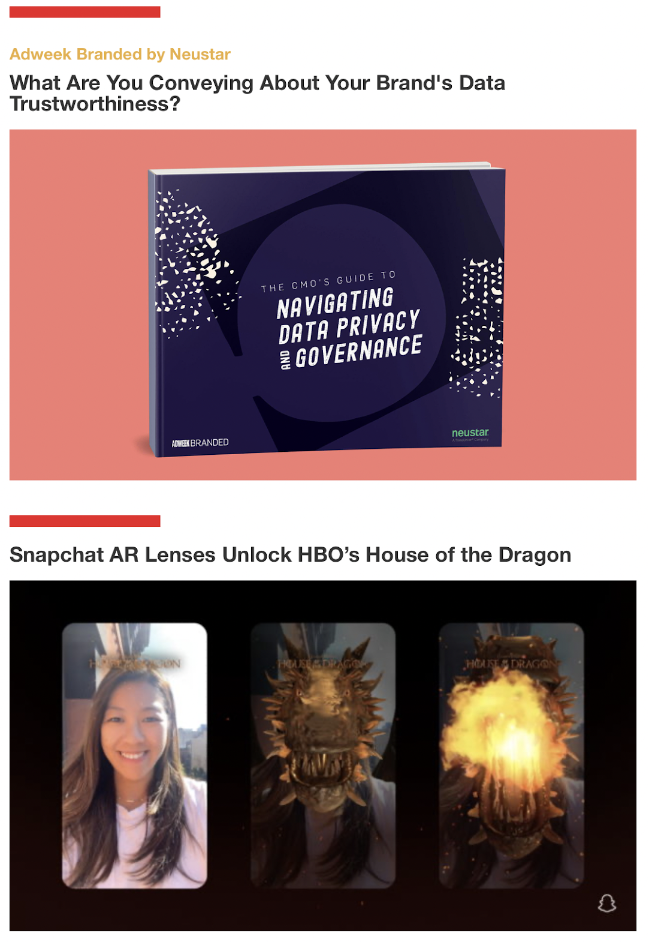Native ad use is skyrocketing as brands seek new ways to grab user attention and work around tricky ad blockers. According to AdYouLike, the native ad market is expected to grow 372% between 2020 and 2025 — reaching a total of $402 billion.
Still, many publishers may not understand the biggest benefits of native advertising. Or, without a full overview of how native advertising works, they might be wary of any potential risks and drawbacks.
So, how do you know if native advertising is right for your business? And how do you make the leap away from traditional advertising into this newer, more innovative ad format?
We’re here to help.
In this guide, we’ll unpack the pros and cons of native advertising — so you can make the best decision for your business.
3 pros of native advertising
First, let’s look at the biggest advantages of running native campaigns.
1. Deliver seamless user experiences
Since native ads blend into their surrounding content, they’re more intuitive and less disruptive for consumers. A native ad might be a sponsored Instagram post or Google search result, for example. Or it might take the form of an article thumbnail in an email newsletter of trending stories:

The point is that while traditional banner ads interrupt the flow of the user experience, native ads are designed to be part of that experience.
2. Enjoy an antidote to ad blockers
A whopping 40% of U.S. adults now use ad blockers on their desktops and smartphones to prevent brands from disrupting them. Native ads and branded content, however, are generally immune to those ad blockers, since they don’t take the form of traditional banner ads or pop-up ads.
Since native ads look like organic content — except for a necessary “Paid for by” or “Sponsored by” disclaimer — publishers can use them to continue monetizing their websites and emails.
3. Increase engagement and trust across channels
Native ads don’t just look better than display ads. They perform better than them, too.
According to AppNexus, native ads were found to have 8.8X higher clickthrough rates (CTRs) than display ads. Meanwhile, eMarketer found that native video ads drive better performance than other video ad formats like in-stream ads.
3 cons of native advertising
Now, we’ll dive into the potential risks and downsides of native advertising — and the solutions you can use to mitigate them.
1. Native rendering can be complicated

The process of actually creating and distributing native ads can be complex. After all, each native ad has to be customized and hard-coded to match its surrounding content. Otherwise, well, it’s not native.
The good news is, that was the old way of launching native campaigns. Now, we’re in a new era of native advertising.
With Jeeng Renderer, creating native ads is easier than ever before. It’s the first automated solution that lets publishers deliver customized native email ads without all the manual hard coding.
2. Advertisers have to be on board
If you want to monetize your content with native ads, you might be wondering how to get brand partners on board. Thankfully, many already are.
According to eMarketer, US native ad spend increased 37% in 2021 and programmatic native ad spend is predicted to reach $83 billion in 2022.
As more advertisers catch onto the benefits of native ads, all publishers have to do is provide them with the right content placements and target audiences.
The new Jeeng Renderer, for example, syncs directly with your Google Ad Manager (GAM) account, so you can pull existing campaign assets, customize them for native, and manage your campaigns in one place.
3. You need access to the right metrics
New to native advertising? You might be worried about tracking the right metrics to gauge campaign performance. But the truth is that native ad metrics aren’t too different from traditional ad metrics.
To measure your native campaigns, you’ll use metrics like:
- Impressions: The number of times your ad was shown.
- Clickthrough rate (CTR): The number of clicks on your ad divided by the number of impressions.
- Conversion rate: The number of people who converted or made a purchase divided by the number of impressions.
- Return on investment (ROI): The amount of revenue generated by your campaign divided by your spend.
You just need the right tools to help you track, manage, and optimize this data. That’s why Jeeng Renderer integrates with GAM, so publishers can manage their native ad reporting and metrics directly on the platform they’re already using.
So, is native advertising right for your business?
If you approach native advertising the old way — with hard-coding, manual tasks, and complex workflows — sure, it might not seem right for you.
But if you join the new era of native advertising — with automation, customization, and a streamlined process — you’ll be able to enjoy all the benefits of this innovative ad format without the obstacles.
That’s where Jeeng can help. With the new Jeeng Renderer, you can easily monetize your content with sleek native ads that drive revenue and improve customer experiences.
Ready to see it for yourself?

